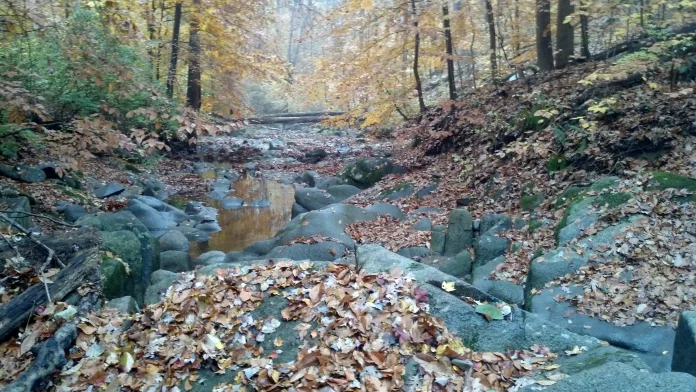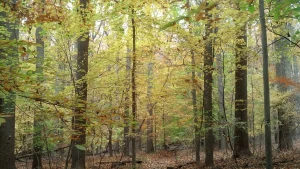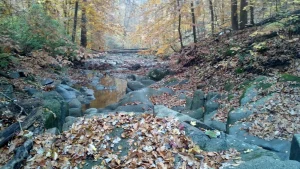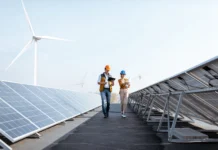Citizen-scientist in Washington, DC, Advocates for Evaluating UV Curing in Municipal Pipe Repair
By Liz Stevens, writer, UV+EB Technology
Dealing with a community’s aging or damaged sewer, storm or drinking water piping system can be a monumental challenge. If pipes must be removed and replaced, the project will require clearing a wide pathway for heavy equipment, trenching, removing the old pipes and laying new ones, and then site cleanup and restoration.
An alternative method has been developed that requires far less path clearing, heavy equipment and disruptive excavation. With cured-in-place pipe (CIPP), aging or damaged pipelines can be repaired with a jointless, seamless lining that is inserted into an existing pipe. The CIPP process entails infusing a pipe-length sleeve of felt or fiberglass pipe liner (polyester, fiberglass cloth or other fiber) with resin (often polyester or epoxy), inserting the liner into the pipe, pressurizing the liner to expand it and curing the resin to produce a tough, solid, attached lining.
CIPP curing methods include steam and hot water (both called “thermal”), UV and UV LED. The choice of curing method governs, among other things, the amount of environmental destruction caused by a CIPP project and the type and volume of emissions that the project will generate. When choosing a CIPP cure, it is wise and prudent to first do no harm to the community’s health or to the environment, or at least to minimize the harm that is inevitable.
Marjorie L. Share is a museum professional, author and educator who has lived in the Forest Hills neighborhood of Washington, DC, since 1986. Share began an unlikely exploration of the risks and advantages of CIPP’s curing methods when the District of Columbia Water and Sewer Authority (DC Water) announced plans to repair 6,100 linear feet of 100-year-old sewer infrastructure by using steam-cured CIPP. The project, located in Soapstone Valley, lies within a forested stream bed in a national park that is ringed by homes, apartments, schools and businesses. Share’s initial concern – for the fate and welfare of the park’s beloved trees – soon mushroomed into concern for the welfare of the community’s residents when she learned about the downsides of using the thermal method to cure CIPP piping.
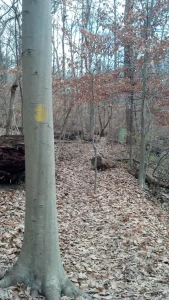
Share attended a public meeting during which DC Water made clear that hundreds of white and red oak, beech and hickory trees would have to be removed in the park so that the heavy equipment vehicles required for steam or hot water CIPP could access the pipeline’s work zones. “My initial interest,” said Share, “was in reducing the heavy environmental footprint that would require cutting down more than 800 trees in our national park. I thought that smaller vehicles and less equipment could use narrower pathways, calling for less construction of access roads and thereby leaving more trees standing.” While looking for alternatives to the large environmental footprint that steam or hot water CIPP would require, Share learned about ultraviolet glass reinforced cured in place pipe (also called GRP or UV CIPP), which does not use the same number of idling vehicles or the heavy equipment necessary for steam or hot water CIPP.
As described in Sharon M. Bueno’s Trenchless Technology article, “Light Bright: Ultraviolet Curing Continues to Make Inroads in the CIPP Market,”1 with UV curing, a fiberglass-reinforced liner is installed using a winch and the pull-in-place method. After being inflated, the liner’s quality is checked via CCTV, and then a UV light train is pulled through the pipe to cure the liner. With this method, a truck with a conveyor unit feeds the liner into the pipe, and a telescoping boom winch at the other end of the pipe pulls the liner into place. Additional equipment is used to inflate the liner tube and CCTV equipment is required for the pre-cure quality check of the liner.
Share’s efforts to understand the difference between UV and thermal CIPP methods led her to scientific studies, peer-reviewed journal articles and news reporting on the environmental and human health impacts of thermal curing. Share communicated with dozens of CIPP companies and industry professionals. She found photos of UV CIPP on the internet showing much smaller vehicles being used – a finding which, to Share, translated into less tree removal than the heavy equipment and wider pathways needed for the legacy thermal curing.
One industry professional that Share spoke with was Michael Dvorchak, a RadTech volunteer extraordinaire – whose career includes 26 years at Bayer MaterialScience, with 20+ years focusing on the company’s UV coating technology development. Dvorchak offered valuable advice on evaluating CIPP methods, the relative strength of UV curing vs. thermal curing, and emissions from the CIPP process and from the vehicles powering the process.
Dvorchak advised that in planning a CIPP project, UV CIPP should be compared to thermal CIPP methods in an apples-to-apples cost-benefit analysis so that the plusses and minuses of each method will be made clear. He stated that a UV-cured pipe lining is much stronger than a thermal-cured pipe lining. In a City of Portland (Oregon) report on the comparisons between thermal CIPP and UV CIPP, the Flexural Modulus for the thermal CIPP came in at 637 K PSI. The UV CIPP came in at 1,467K PSI – over twice the performance of the thermal CIPP2.
Dvorchak pointed out that the resin used in thermal CIPP contains styrene, a harmful VOC that should be captured as it is emitted during curing. The City of Portland report listed this as a major “con” to the thermal CIPP method: “there are concerns about styrene odor with the traditional styrene systems2.” When Share noted her concern about the adverse environmental impacts of a CIPP project on the park, its environs and human health, Dvorchak concurred that it was important to take into account how long the work trucks (running on diesel fuel) would need to run and to acknowledge their harmful exhaust emissions. Share emphasized that none of these factors was taken into account in the Environmental Assessment or any phase of the NEPA process required for the project on federal land.
The length of time that operating vehicles must run, said Dvorchak, depended on the dwell time for the curing process – how long it would take to heat the steam or water and pump it into the pipe for the proper chemical reaction cure to take place. Hot water takes considerably longer than steam to heat to a required temperature to initiate curing and this factor should be part of judging a curing method’s environmental footprint. Dvorchak stated that it takes three hours for steam to reach 220 degrees and six hours for hot water. UV CIPP, on the other hand, is an ambient cure, thus requiring no temperature dwell time.
“My research,” Share said, “also led me to Andrew Whelton, a Purdue University professor and civil and environmental engineer who has been studying CIPP since 2015. Whelton’s research has found that the thermal method is highly polluting, and should not be used without sweeping changes, especially near homes, schools and businesses.”
Whelton stated that the steam and hot water curing process releases harmful chemicals into nearby pipes and into the surrounding air, in stark contrast to the explanation given by DC Water that the plume of white rising into the air during the popular steam CIPP process is merely a cloud of steam. Whelton asserted that this is misleading, since the “cloud” contains plastic manufacture waste – a toxic mix of partially cured resin droplets, particulates and organic vapors (styrene and measurable VOCs and SVOCs) – along with some water vapor.
Whelton should know. His team’s 2017 National Science Foundation-funded study was the first evaluation of CIPP emissions into the air to be published in a peer-reviewed journal, the American Chemical Society’s Environmental Science and Technology Letters3. Whelton and other researchers followed up with another study published in the 2019 Journal of Hazardous Materials4. Whelton’s findings indicate that UV CIPP may be the least polluting option and possibly the least risky method for the health of bystanders and the environment. After being contacted by Share, the professor reached out to DC Water, the DC Department of Energy & Environment and other local agencies to volunteer his expertise for the Soapstone Valley project.
Share’s research also led her to statistics showing that 80 to 90% of the pipes in Europe were being relined using UV CIPP, and with great success. This caused Share to be even more skeptical about the planned project in Soapstone Valley.
The 2019 environmental assessment prepared for the Soapstone sewer project in Share’s neighborhood did not consider the health risks, pollution risks or climate impacts of steam or hot water CIPP, nor did it include information on dwell time for curing. The local community lodged hundreds of public comments in response to the Soapstone environmental assessment, including worries that hazardous pollutants would be discharged into the air. Marjorie Share authored an opinion article on the topic in the Forest Hills Connection e-magazine in December 2021, describing the process and its risks, and urging the public to attend community meetings, press for documentation and analysis from DC Water and submit testimony in opposition to DC Water’s plan.
The community expressed its concerns during a meeting in December 2021 and, in January 2022, DC Water announced that it would use hot water instead of steam to cure the resin pipe lining, stating that it viewed hot water curing and UV curing on par as far as health and safety were concerned. DC Water also said that it would use a non-styrene-based resin for the lining, would work downstream up (as opposed to the usual upstream down method for CIPP) and that any water used for the curing process would be captured and removed for treatment at another location.
Community members were not satisfied with this proposal. They pushed for more transparency and a comprehensive analysis from the water agency, which responded that it would prepare a presentation with detailed information on the CIPP curing methods. The community’s elected commissioners remained skeptical and requested a robust assessment of the potential toxic emissions and wastewater. In addition, the community called on Mayor Muriel Bowser to suspend permitting for the project, but the mayor did not grant the request.
As of April 2022, despite the Soapstone Valley community’s actions in protest of DC Water’s decisions and lack of transparency about the CIPP project, the project is slated to move forward with no analyses provided and only scant explanations given to the community. This portion of the national park has been closed and will remain closed for at least a year and half, and tree removal has begun. The agencies involved have ignored Professor Whelton’s offers of expertise and advice. The community remains steadfast in its request that DC Water operate more openly and share the promised analyses, along with its plans for how to monitor the project by a third party and safeguard the environment and population. It still is waiting to hear whether the city’s Department of Energy & Environment will require an air or water permit.
Marjorie Share and her community wanted to understand the facts about CIPP and the curing methods available. They went to bat, doing research, contacting agencies, asking for greater clarity and justification for decisions that will affect their environment and, possibly, their health. “We still are hoping that our research and work towards truth and facts will help DC Water and the city see a result that is a win-win for everyone,” said Share. “We wanted DC Water to be a leader. It still could be. It could be in the forefront of safely rehabilitating the pipe system assets in an environmentally sensitive area, surrounded by a pre-school, apartment dwellers, homes and small businesses. We were hoping that the Soapstone project would set a standard that could be replicated across the city.”
The community has plans in mind for the park after the project is completed. “We will focus on Soapstone 2.0, as we call it, the next phase for the park,” said Share. “What will the park look like after the work is completed? How will the local Montessori School want to use the park for the benefit of its young students?”
Share’s advice to other communities considering a CIPP project is succinct: “In my view, more education of utilities and engineers about UV CIPP needs to take place. Learn everything you can about both the environmental and health implications of CIPP and its various curing methods. Ask for options, analysis, and documentation.”
For more information on Share’s advocacy for this Soapstone Valley project, visit www.foresthillsconnection.com/news/opinion-upcoming-soapstone-sewer-work-will-use-a-method-thats-toxic-to-humans-and-the-environment-there-is-another-way/.
References
- Sharon M. Bueno, “Light Bright: Ultraviolet Curing Continues to Make Inroads in the CIPP Market,” Trenchless Technology, November 5, 2019. https://trenchlesstechnology.com/light-bright-ultraviolet-curing-continues-to-make-inroads-in-the-cipp-market/.
- Hutchinson, M. W. and Durshpek, E., “Learning about UV CIPP versus Steam and Water Cure CIPP in Portland Oregon,” North American Society for Trenchless Technology (NASTT), NASTT’s 2018 No-Dig Show, Palm Springs, CA, March 25-29, 2018, TM1-T6-05.
- Seyedeh Mahboobeh Teimouri Sendesi, Kyungyeon Ra, Emily N. Conkling, Brandon E. Boor, Md. Nuruddin, John A. Howarter, Jeffrey P. Youngblood, Lisa M. Kobos, Jonathan H. Shannahan, Chad T. Jafvert, Orcid, and Andrew J. Whelton. “Worksite Chemical Air Emissions and Worker Exposure during Sanitary Sewer and Stormwater Pipe Rehabilitation Using Cured-in-Place-Pipe (CIPP),” Environ. Sci. Technol. Lett. 2017, 4, 8, 325–333.
- Kyungyeon Ra, Seyedeh Mahboobeh Teimouri Sendesi, Md. Nuruddin, Nadezhda N. Zyaykina, Emily N. Conkling, Brandon E. Boor, Chad T. Jafvert, John A. Howarter, Jeffrey P. Youngblood, Andrew J. Whelton. “Considerations for emission monitoring and liner analysis of thermally manufactured sewer cured-in-place-pipes (CIPP),” Journal of Hazardous Materials, Volume 371, 2019, Pages 540-549.



